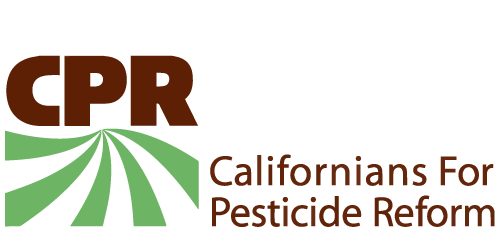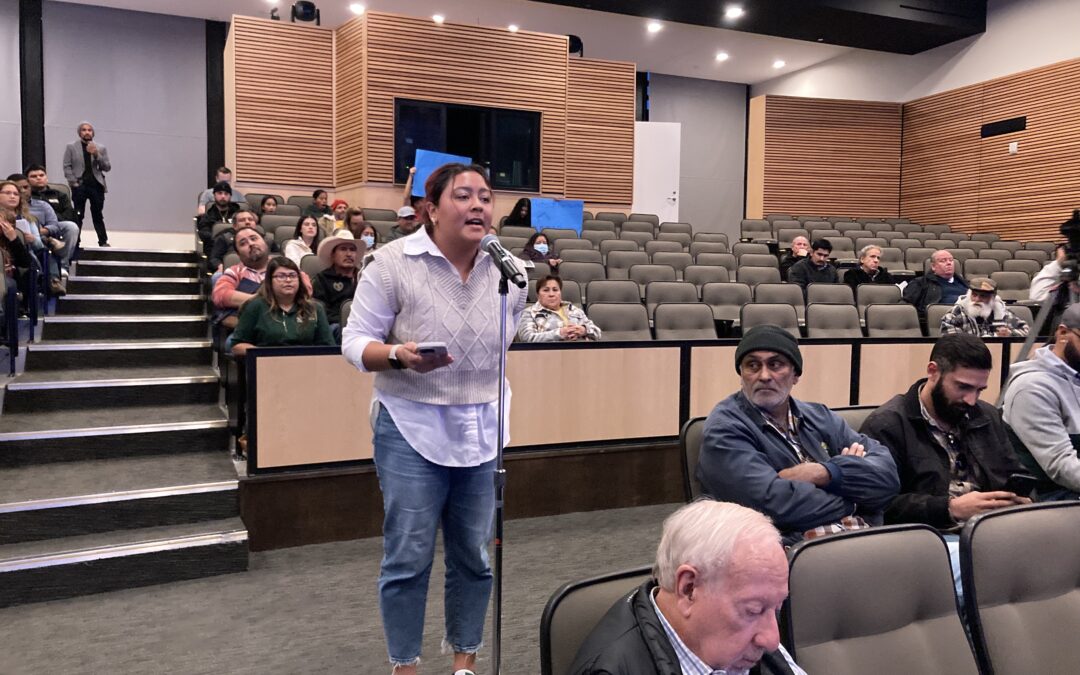Farmworkers call for more transparency about location of planned pesticide applications
Lindsay, CA: How can a public health warning system adequately notify the public if the exact location of the health threat is kept secret? That question was posed by dozens of farmworkers and advocates to the California Department of Pesticide Regulation (DPR) in Clovis on Wednesday, at the first of three public hearings to consider the Department’s proposed new pesticide notification rule.
The proposed regulation is a ground-breaking step toward increased public transparency regarding agricultural chemical use. Worldwide, there are few and limited exceptions to the secrecy surrounding pesticide applications. Although the many health harms of pesticide exposure, which include cancer, asthma, autism, birth defects, are well documented, the public is not informed in advance when such applications will occur.
The proposed regulation will change that, by providing advance notification of applications of pesticides classified as “restricted materials”, those considered most hazardous or drift-prone, for which growers must obtain a permit and submit a “Notice of Intent” (NOI) prior to use.
However, the proposed regulation will only identify the one square mile section in which the planned application will take place, not the exact field location.
“We welcome the proposal by the California Department of Pesticide Regulation to provide advance notice of restricted material pesticide use,” said Angel Garcia, co-director of the statewide coalition Californians for Pesticide Reform. “For decades, community residents living on the frontlines of agricultural pesticide use have called for the basic right to know about nearby chemical spray before it happens. However, like any public health warning system, it’s vital that the exact location of the health threat is provided. We urge DPR to amend their proposal to include it.”
Many of those providing public comment pointed out that withholding known location information will weaken the effectiveness of the notification system. Addressing a panel of three DPR employees, community organizer Rocio Madrigal said “I help exposed residents in making reports to state agencies and one of the first things we are asked for is the exact location: Pinpoint an address. Why is that information not given to us?”
The proposed regulation includes a requirement that DPR conduct an evaluation of the regulation and produce a report after three years. For many in attendance in Clovis, this was insufficient, and would not go far enough to ensure future improvements to a regulation that they contend is already compromised by the failure to include the exact field location of pesticide applications.
Cynthia Pinto-Carbrera with the Central Valley Air Quality Coalition noted “There must be accountability and transparency with the system. DPR must establish an annual review committee composed of impacted residents to guide the continued development of the notification system. This system will be meaningless if the agency is not accountable to community.”
Public comment continues with a second public hearing Thursday in Ventura and an online hearing on December 19. DPR will receive written public comments emailed to dpr23003@cdpr.ca.gov by January 12, 2024.
#################################
Californians for Pesticide Reform (CPR) is a diverse, statewide coalition of 200+ member groups working to strengthen pesticide policies in California to protect public health and the environment. Member groups include public and children’s health advocates, clean air and water groups, health practitioners, environmental justice groups, labor, education, farmers and sustainable agriculture advocates from across the state.

